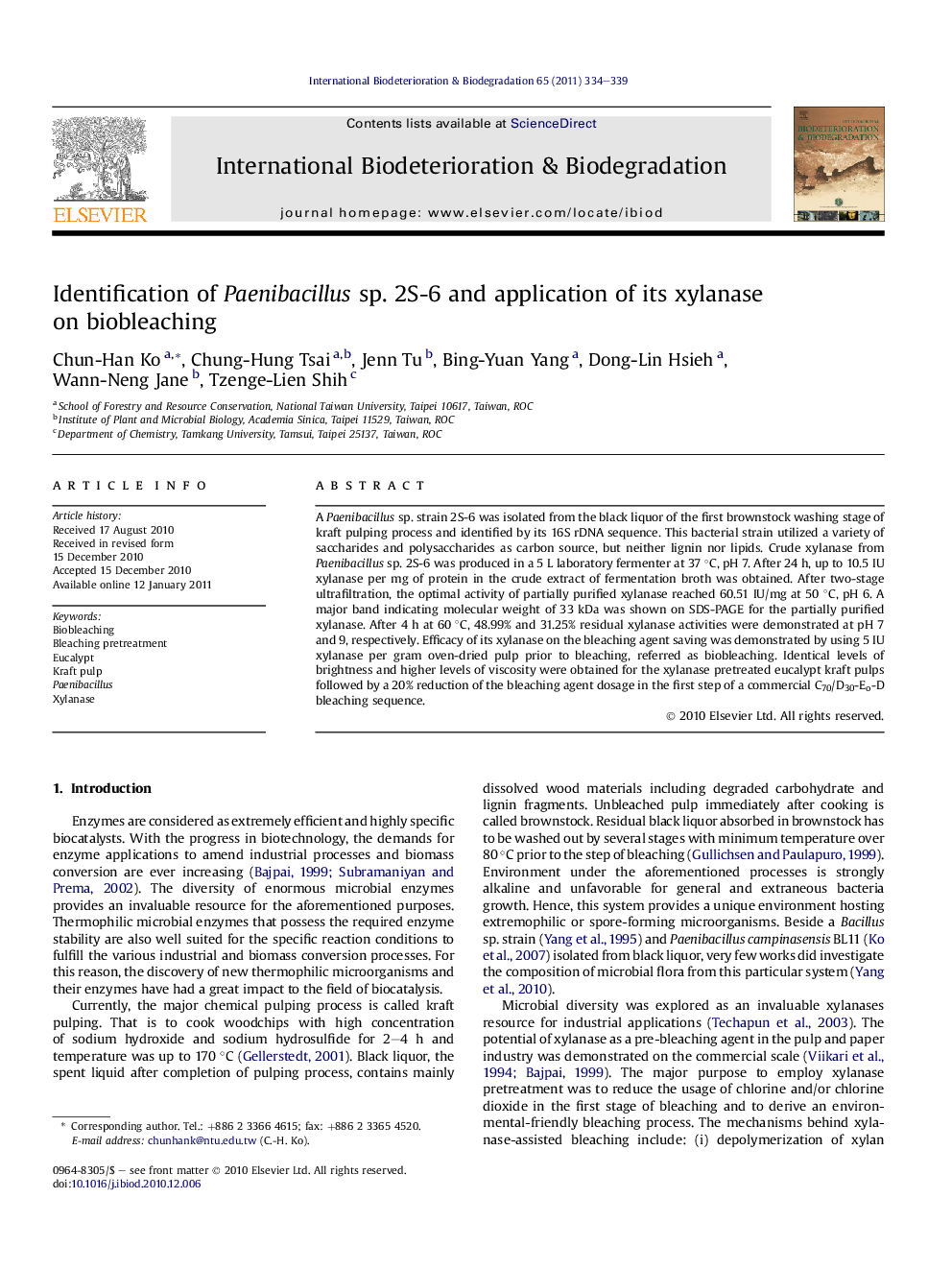| Article ID | Journal | Published Year | Pages | File Type |
|---|---|---|---|---|
| 6289536 | International Biodeterioration & Biodegradation | 2011 | 6 Pages |
Abstract
A Paenibacillus sp. strain 2S-6 was isolated from the black liquor of the first brownstock washing stage of kraft pulping process and identified by its 16S rDNA sequence. This bacterial strain utilized a variety of saccharides and polysaccharides as carbon source, but neither lignin nor lipids. Crude xylanase from Paenibacillus sp. 2S-6 was produced in a 5 L laboratory fermenter at 37 °C, pH 7. After 24 h, up to 10.5 IU xylanase per mg of protein in the crude extract of fermentation broth was obtained. After two-stage ultrafiltration, the optimal activity of partially purified xylanase reached 60.51 IU/mg at 50 °C, pH 6. A major band indicating molecular weight of 33 kDa was shown on SDS-PAGE for the partially purified xylanase. After 4 h at 60 °C, 48.99% and 31.25% residual xylanase activities were demonstrated at pH 7 and 9, respectively. Efficacy of its xylanase on the bleaching agent saving was demonstrated by using 5 IU xylanase per gram oven-dried pulp prior to bleaching, referred as biobleaching. Identical levels of brightness and higher levels of viscosity were obtained for the xylanase pretreated eucalypt kraft pulps followed by a 20% reduction of the bleaching agent dosage in the first step of a commercial C70/D30-Eo-D bleaching sequence.
Related Topics
Life Sciences
Environmental Science
Environmental Science (General)
Authors
Chun-Han Ko, Chung-Hung Tsai, Jenn Tu, Bing-Yuan Yang, Dong-Lin Hsieh, Wann-Neng Jane, Tzenge-Lien Shih,
